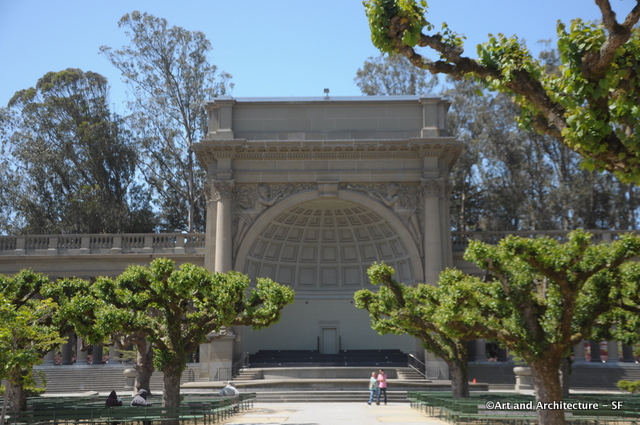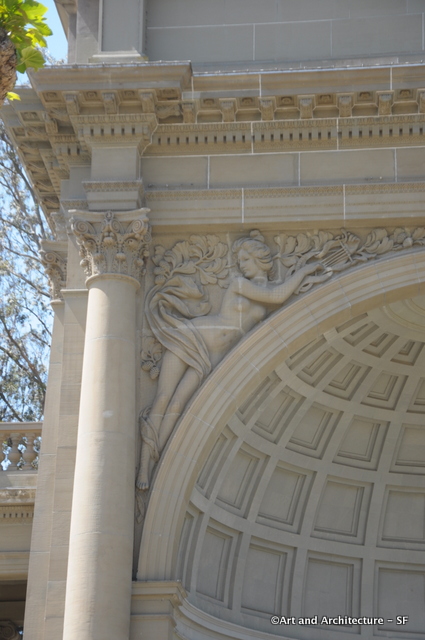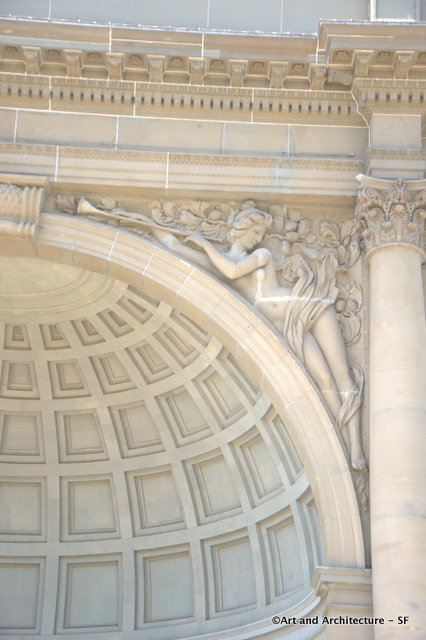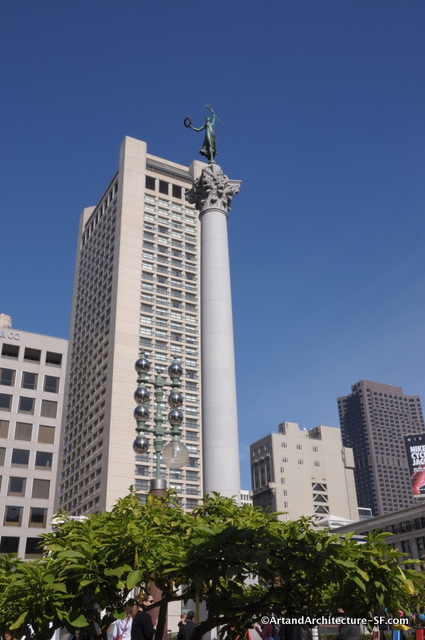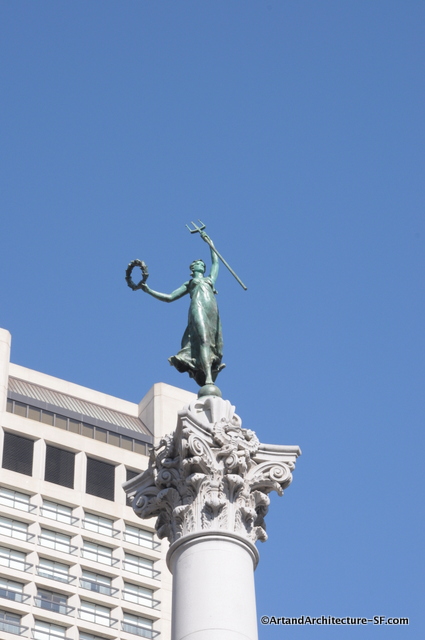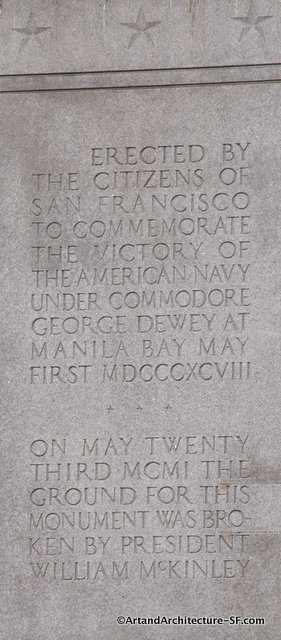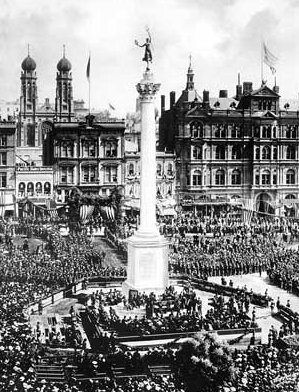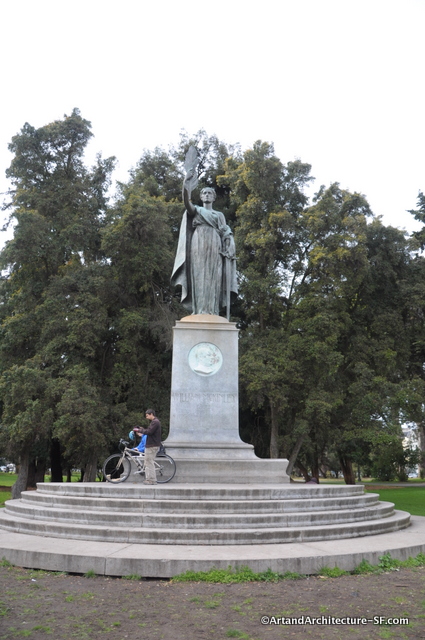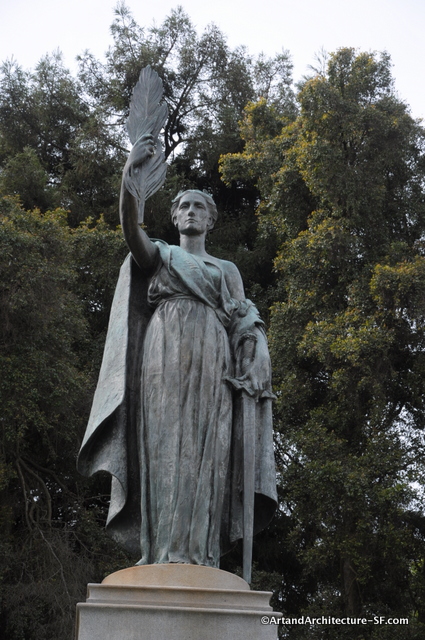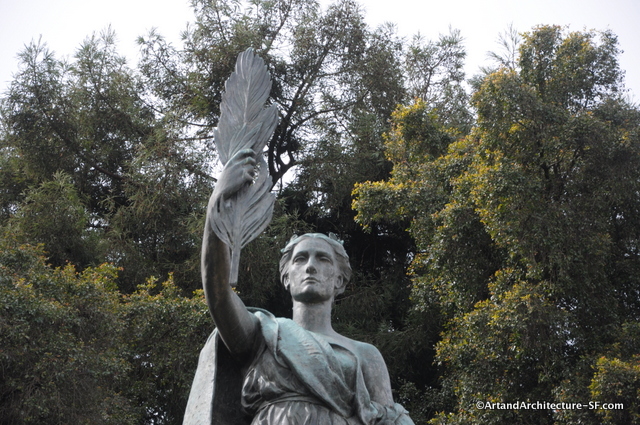Music Concourse
Golden Gate Park
Spreckels Temple of Music
This is the third bandstand to grace Golden Gate Park. Claus Spreckels (The Sugar King) gave $75,000 towards the $78,810 cost of the building. The shell is an Italian Renaissance style with an acoustically reflective coffered shell standing 70 feet high and covered in Colusa Sandstone.
The Temple, dedicated on September 9, 1900, suffered damage in the 1906 earthquake (much of its Colusa sandstone cornices, balustrades and corners collapsed). It was further rattled by the region’s 1989 earthquake. This time the restoration was over seen by restoration architects Cary and Company. Performers under the dome have ranged from John Philip Sousa to Pavarotti and the Grateful Dead.
The band shell is home the the Golden Gate Park Band, an institution since 1882. They provide free concerts 25 Sundays each year.
Designed by Reid Brothers architects, it is similar to another structure designed by the Reid Brothers in Bellingham, Washington. There is an excellent history of the Reid Brothers by the San Francisco Examiner here.
The two relief sculptures are by Robert Aitken. The one on the left holds a lyre and the one on the right a trumpet.
Born in San Francisco, California, Robert Aitken became a noted sculptor who spent most of his career teaching at the National Academy of Design in New York City. He did numerous portraits, full size and bust, of well known figures.
For his early study he was a painting pupil of Arthur Mathews and Douglas Tilden at the Mark Hopkins Institute, San Francisco, and by the time he was age 18 he had his own studio. In 1897, he studied briefly in Paris, where influences turned him to sculpture.
He taught at the Mark Hopkins Institute of Art, University of California, from 1901 though 1904, and was awarded some of the premier sculpture commissions including monuments to the Navy and to President McKinley in Golden Gate Park. In 1904, he returned to Paris for three more years, and then settled in New York City where he was an instructor at the National Academy of Schools Sculpture Class, and at the Art Students League.
